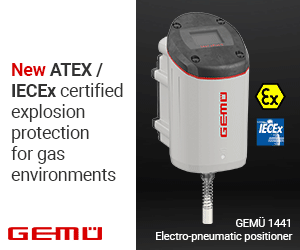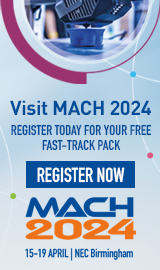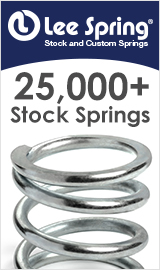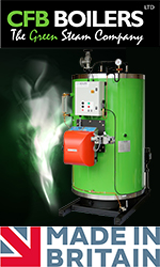EFACS E/8 adapts to the world of hazardous chemicals
Vickers Laboratories is a family-owned, UK-based company, making a wide range of chemicals for markets including primary and secondary education and pharmaceuticals, plus specialist niches like monitoring, measuring and contact lenses. Due to some products being classified as dangerous goods, the company has to work in a highly regulated environment and its IT system has to conform to this.
Vickers’ business essentially falls into two key areas. Goods are either purchased in bulk then broken down, repackaged into smaller amounts and sold on, either as own brand or third party, or they are purchased, mixed to form new products and then packaged into the required sizes.
Whilst the company only deals with an average of 30-40 orders/day, it has a product range of 2,500+ and over 6,000 stock-keeping units. Moreover, orders may range from a 10 ml bottle to a 1,000 litre batch with raw materials being supplied in sizes from 0.01 gm to tonnes.
The hazardous nature of many of these chemicals means that different products need to be stored in specific ways to comply with ever changing regulations. Varying shelf lives add to the complexity, as do lead times for certain chemicals where there may only be one or two suppliers worldwide.
This complexity extends to an otherwise straightforward manufacturing process. With the exception of product(s) for contact lenses, manufacturing involves literally mixing the required chemicals in the appropriate way in any of the different sized mixing vessels, then testing the end product and adjusting accordingly where necessary.
Once complete, the finished goods are then packed to customer specifications and dispatched. 70% of all products are make-to-stock but, given the nature of the finished goods, most products are actually dispatched within a week of manufacture.
Vickers has 14 mixing vessels ranging from 25 to 7,000 litres and in theory any order can go into any vessel as long as it physically fits, but optimal use of this capacity is a real challenge. This is because we have to balance specific order requirements against economic batch quantity considerations, which vary depending on the shelf life of the raw materials involved and the finished product.
Certain products also vary in strength or composition over time while in the mixing vessels, which means that we have to test accurately and regularly to get it within specification. This requires having well-trained employees available, as well as free space in the analytical laboratory. Any delay can have an effect on the product still in the vessel.
Add to this the fact that certain tests require specialist equipment and can take a considerable time, the analytical laboratory can become a significant bottleneck. We also have to factor in that different products require different cleaning and set-up times, with certain products actually requiring an interim test stage to check that the vessel is free from contamination.
Some products, such as reagents for the utility sector, add another layer of complexity altogether. In this case, we have to make ‘matched sets’, which means that all four products are manufactured and tested against each other as well as the required specification. This requires four suitable vessels as well as increased analytical staff and packaging capacity. In addition, every aspect of the business is heavily regulated, from raw materials and finished goods storage, the provision of up-to-date product information sheets and packing information, as well as keeping staff safe and other everyday challenges.
Rigorous processes have to be in place in such an environment and any IT system has to be highly customised to deliver value. For Vickers, this was an off the shelf COBOL-based system that had been implemented in the 1970s. After the vendor went bankrupt, it was extensively modified in-house over the years.
Whilst the system served its purpose well and could even handle EDI orders, its MRP functionality was crude, the accounts were weak and various other areas less than ideal. In large part, it relied on one key employee. When the owner considered selling the business, together with his wife, a project manager, the company decided to look for a replacement.
After visiting various trade shows they drew up a wish-list, which was sent to 12 vendors. Most said they could not do anything as complex as we required. This left four, who were invited to come and do a half-day demonstration, with all areas of the business involved.
After one obviously weak candidate was dropped, it came down to a choice between three and EFACS E/8 from Exel Computer Systems was chosen unanimously. We liked the fact that it was browser and Java-based, customisable, especially with the Adapt toolkit, and offered advantageous areas of functionality, such as workflow. It could also be readily adapted to the world of hazardous chemicals.
Implementation took some time, however, not because of the customisation required, but to a significant change in regulations that occurred mid-way through. We had to decide whether we could make EFACS E/8 compatible with the new Classification, Labelling and Packaging (CLP) Regulations but there was huge uncertainty at the time about what the finalised versions of these would be.
Vickers therefore decided as an interim step to suspend implementation and amend its existing system because this was simpler to do in the time scales required. During this time, the company also embarked on a management buyout. The EFACS E/8 implementation was picked up when the company was finally sold in 2010, with the team focussing on individual chunks at a time, such as goods in, manufacturing, dispatch, etc.
This gave us much more chance to really focus, not just on how we currently did things, but to review how we might do them better using EFACS E/8. It soon became clear that, whilst some areas needed it to be customised to follow our existing processes, there were others, for example workflow, that would work better if we did things the way EFACS E/8 wanted.
The process also gave us an opportunity to do things in a more logical way and to get the necessary acceptance, which would have been difficult if we had tried to make the same changes with the old system. Previous experience of having made the old system CLP-compliant also proved of benefit in working with Exel to ensure that EFACS E/8 was compliant too. The system finally went live in March 2013.
While we had lots of teething problems relating to things we had not foreseen, we were able to trade from day one with no issues. Benefits were felt from the outset due to the inherent workflow built into EFACS E/8, which significantly tightened up what could and could not be done at each process step.
For example, before this it would have been possible to generate a pick note with no link to stock availability. Now with EFACS E/8, a pick note can only be generated if there is confirmed availability. This has been repeated across the company in many different ways, which means that everyone has become more focussed and trusts what the system is telling them.
Similarly, when goods are delivered, there are regulatory considerations about how and where these must be stored. These rules are built into EFACS E/8, which means that the operative is only shown the physical stock locations available for each specific incoming product as determined by the rules. A similar process happens for goods out.
Data is now exported directly from EFACS E/8 to appropriate spreadsheets which are then delivered to each department. Previously, this information took a lot longer to generate and was supplied on paper which could easily get lost or be ignored.
People now have no alternative but to work the way EFACS E/8 says, using the information it provides. Because production staff have to enter start and stop times for each process step as well as outcome, we have real-time visibility of what is happening and where. This, plus a structured workflow, has empowered those with responsibility for planning and sequencing the use of vessels and testing to reduce bottlenecks in these areas.
Another benefit is that it is now possible to categorise products, which not only provides better information but also helps with making more informed decisions such as optimising any EBQ considerations. Likewise, because the MRP in EFACS E/8 now includes raw materials, more informed end-to-end business decisions can be taken, such as what to make and when.
The machines in Vickers’ dedicated printing area have to deal with a large variety of label shapes and sizes. All relevant labelling information is generated by and stored within EFACS E/8 and communicated to the new specialist label management system. Likewise, on hitting the ‘dispatch’ icon in EFACS E/8, all essential data, such as service level, product description, hazardous warning information and materials safety data sheets, are generated automatically and, where necessary, transmitted direct to the courier or transport company.
Vickers intends to use the functionality of EFACS E/8 to do things it could not do before, most obviously its CRM capabilities to support a new marketing drive. The company also plans to use the system’s shop floor data capture capabilities combined with touchscreens provided to different areas of the company to streamline and further automate the flow of goods and information.



























































































































